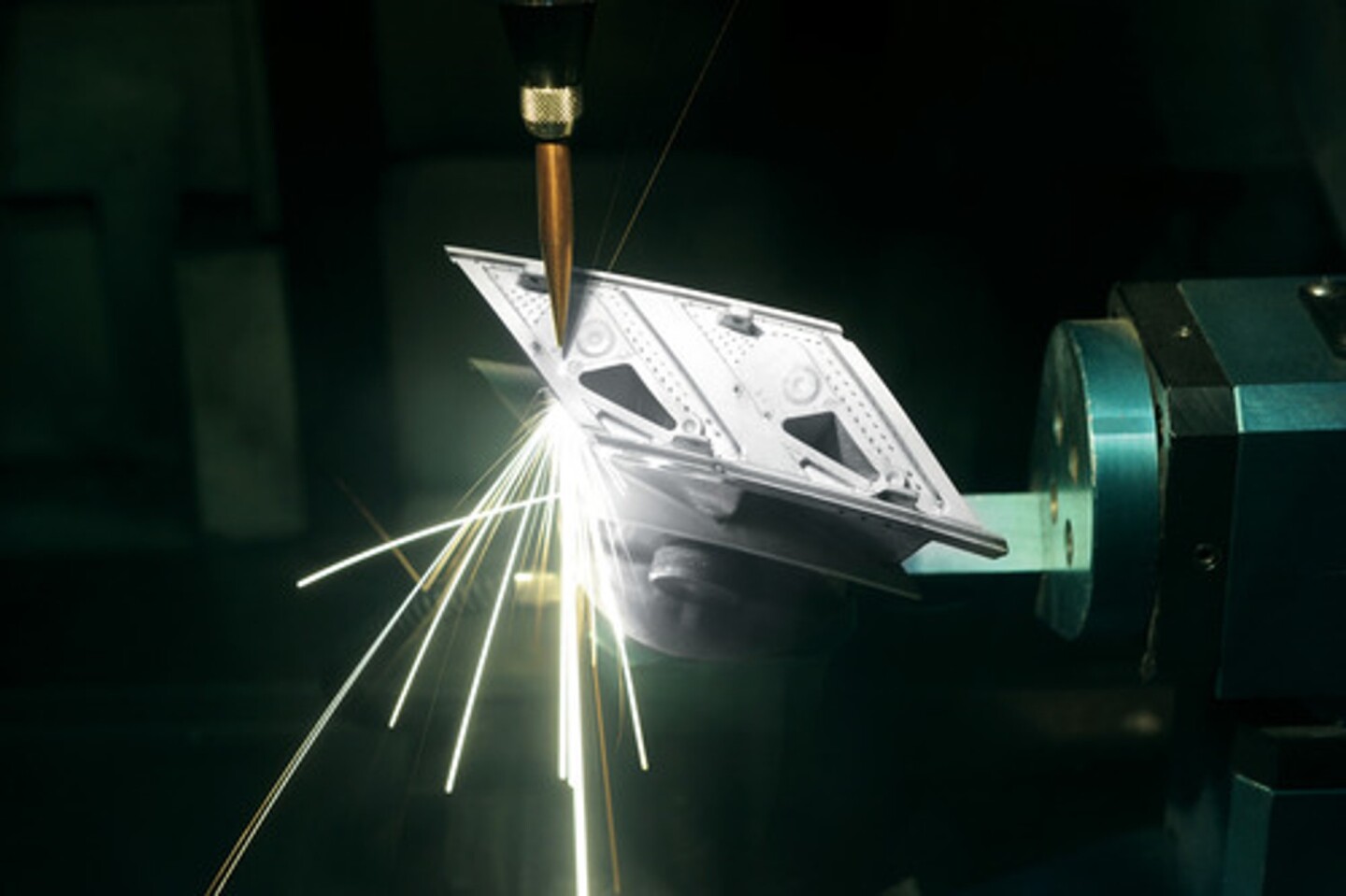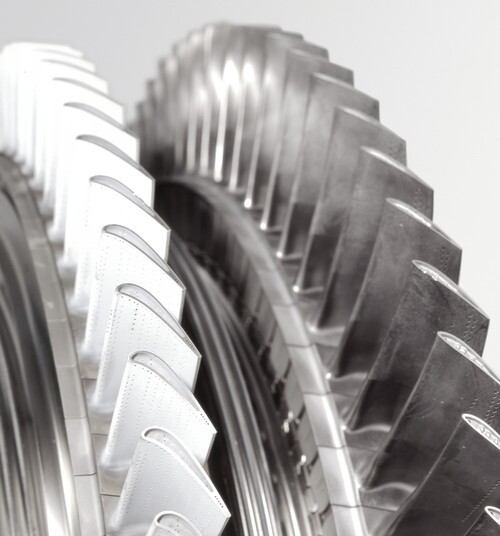Turbine blades for use in jet engines need to be made of a hard, unyielding exotic material made to exact specifications, which means the drilling of tiny cooling holes in the blades runs the risk of ruining them. To prevent this from happening, GE is combining the heat of the laser beam with the cooling of the water jet to drill holes without weakening the blades.
The inside of a jet turbine is a material engineer's nightmare. With temperatures approaching that of molten steel, incredible pressures, and roaring with hot corrosive gases, the turbine's parts, particularly its blades, need to be made of exotic alloys or ceramics to ensure they are protected against damage and remain within the painstakingly precise tolerances of their design. To achieve this, engineers drill tiny holes and channels in the blades to allow cooling air to circulate.

The trick is to drill the tiny holes without damaging the material in the blade. Lasers can cut very precise holes by vaporizing the material on the spot, but they also heat the surrounding metal, which can change the molecular structure and weaken it or make it more susceptible to corrosion from the hot gases. Worse, the vaporized metal can fall back as droplets that can stick to the blades. The trick, therefore, is to cut and cool at the same time.
GE has carried this trick off thanks to a laser/water jet hybrid called Laser MicroJet, which was developed by the Swiss company Synova and adapted by Charlie Hu, an industrial manufacturing engineer at GE Power & Water since 2011.
"We had to redesign the laser jet to the geometries we required," says James Cuny, engineering executive at GE Power & Water. “Before this, the machine used for other applications was like a big barrel with a laser coming out of it. It was not very conducive to what we required.”

The MicroJet, combines the laser with a hair-thin water jet, but the water is more than a coolant. It also works like an optical fiber that guides the laser to its target, so both jet and beam hit the exact same target. The water can then cool the area around the new hole while washing away the debris before it can settle. According to GE, this not only reduces the damage caused by the laser drilling, but also makes the turbines more durable and capable of greater speeds.
GE says that the success with drilling turbine blades has led the company to look at other applications of the technology in aviation and other areas. As part of this, Hu, GE, and Synova are looking at combining the laser with a water jet with a high enough pressure to cut steel to produce a double-edged cutting device.
Source: GE









